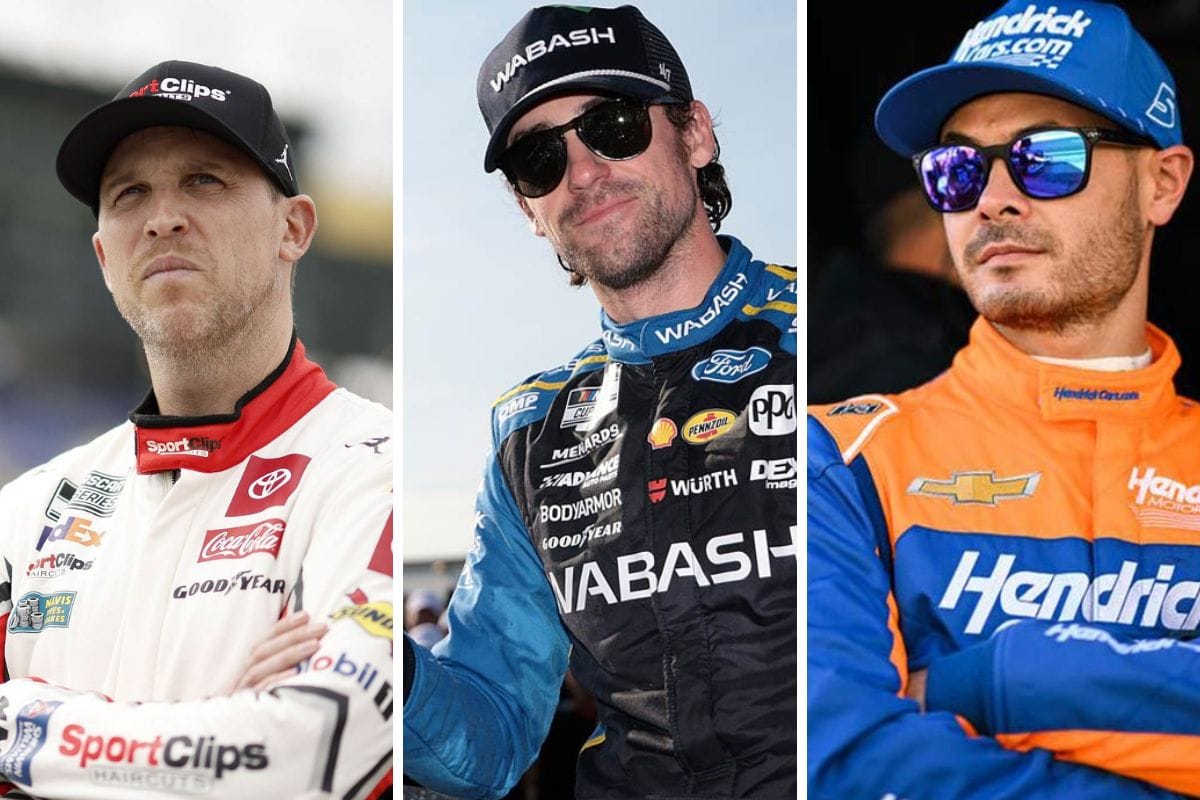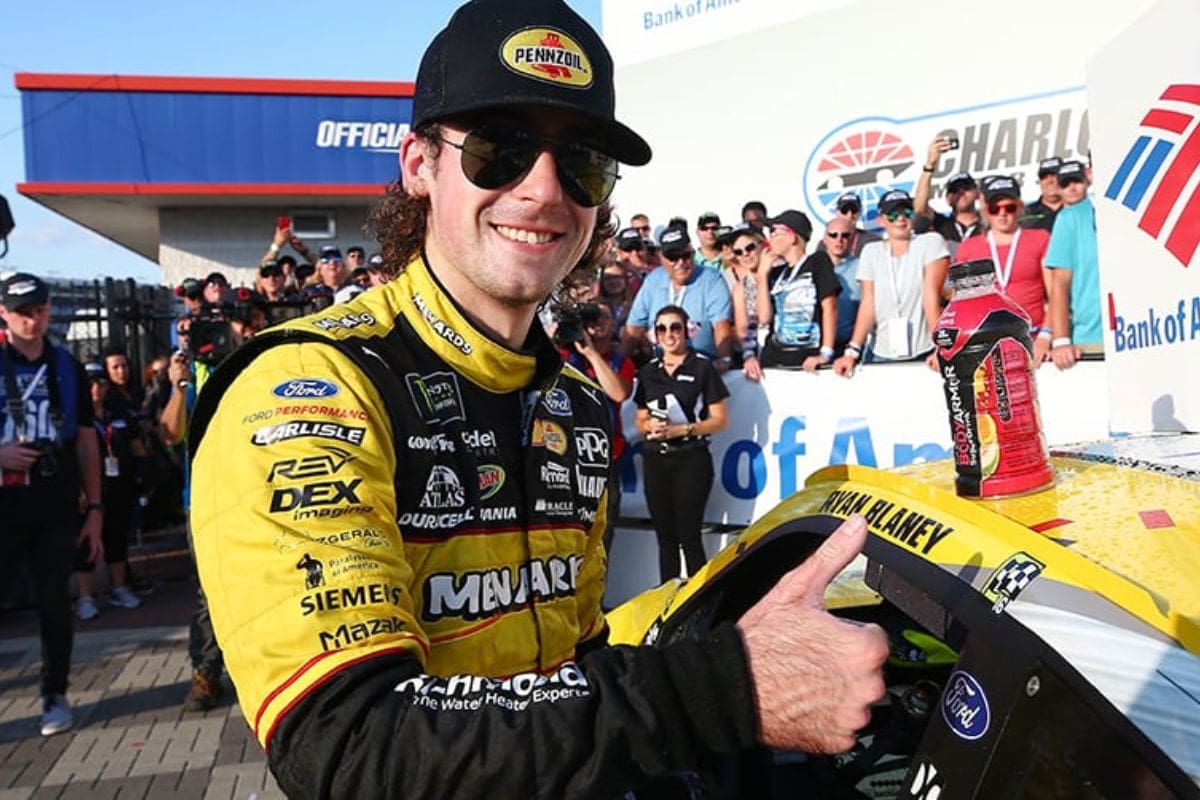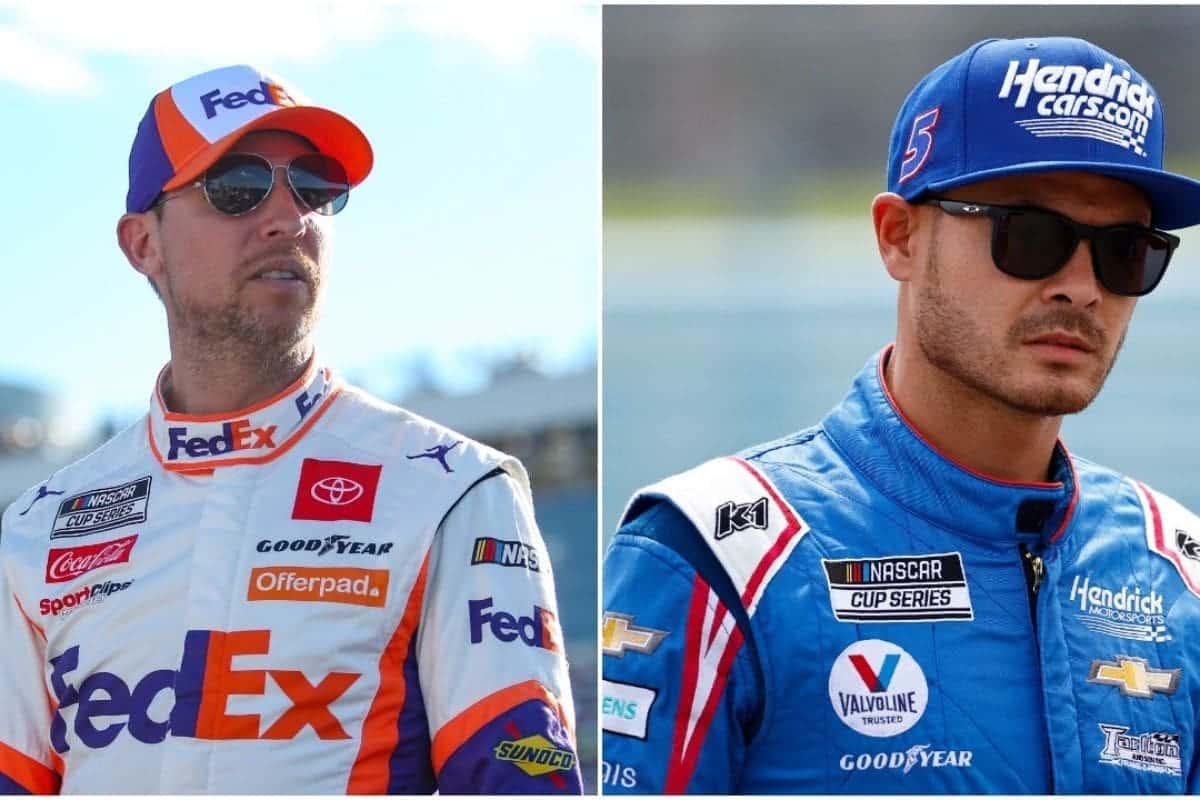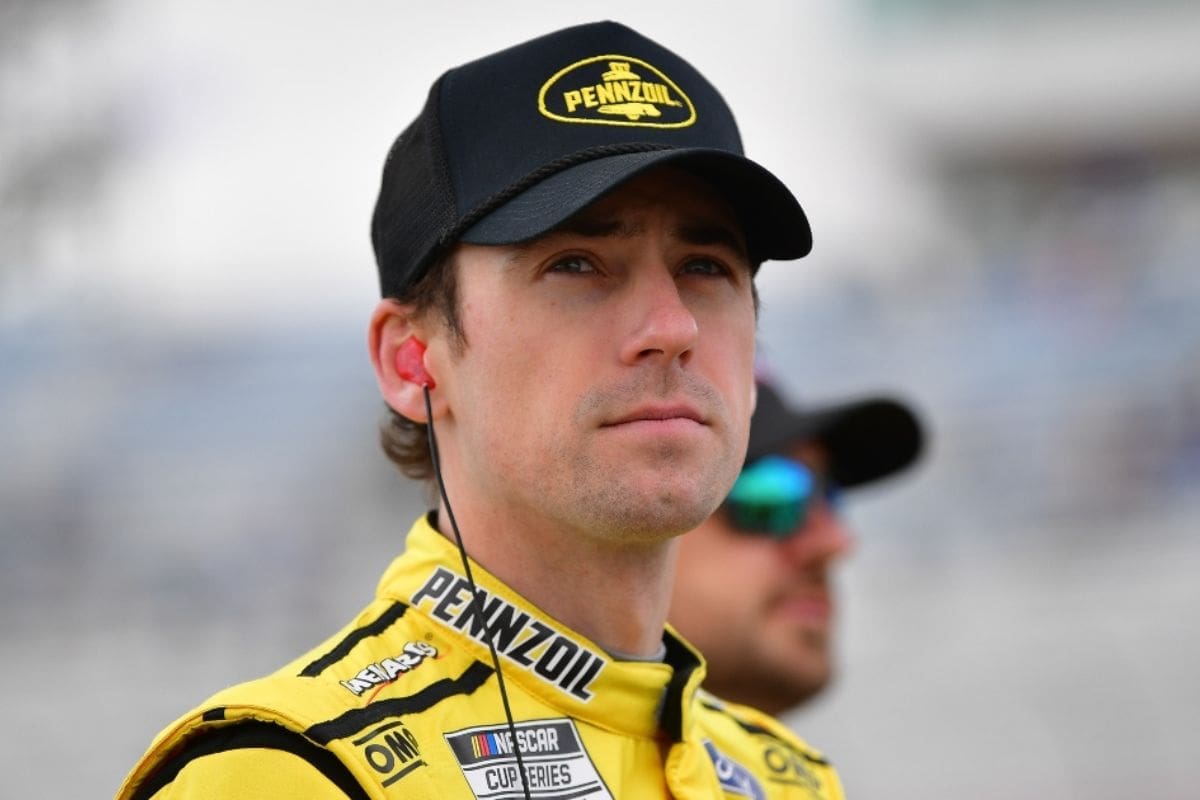Ryan Blaney’s Take on Kyle Larson and Denny Hamlin: Ryan Blaney‘s observations on the racing strategies employed by Kyle Larson and Denny Hamlin reveal a subtle understanding of competitive dynamics in motorsports. By asserting that ‘they love to try to make you lift,’ Blaney highlights the mental and physical tactics these drivers utilize to manipulate their opponents’ driving behavior. This approach tests the mettle of their rivals and raises questions about the broader implications for race strategy and driver adaptability. As the racing season unfolds, one must consider how these tactics will influence championship aspirations and the evolving landscape of competitive racing.
Key Highlights
- Ryan Blaney highlights Kyle Larson and Denny Hamlin’s aggressive tactics that force competitors to alter their driving styles, creating strategic challenges.
- Both drivers excel in limiting racing room, effectively pushing rivals to lift off the throttle and adjust their lines.
- Blaney notes that Larson’s physical contact tactics and Hamlin’s mental games heighten uncertainty among competitors during races.
- He emphasizes the importance of mental readiness and adaptability in countering their dynamic racing strategies.
Ryan Blaney’s Insight on Championship Contenders
In an insightful analysis of his championship rivals, Ryan Blaney articulated the unique racing strategies of Kyle Larson and Denny Hamlin, emphasizing the challenges their distinct styles present on the track. Blaney recognizes that both drivers exhibit a remarkable proficiency in adapting their tactics, making them formidable opponents in the NASCAR Cup Series.
Larson’s aggressive approach, characterized by his willingness to push the limits, often forces competitors to adjust their driving styles considerably. This adaptability is essential, as it creates a dynamic where Blaney must remain vigilant, anticipating Larson’s next move. The ability to capitalize on minor mistakes from rivals is a hallmark of Larson’s driving, which Blaney acknowledges as a constant strain during races.
Conversely, Hamlin’s tactical mindset and experience create a different set of challenges. Hamlin is known for his calculated aggressiveness, often leveraging positional awareness to outmaneuver competitors. Blaney’s observations indicate that Hamlin’s tactics involve an intricate understanding of track dynamics and competitor behavior, allowing him to execute precise overtakes at pivotal moments.
These insights reveal not only the inherent challenges Blaney faces while racing against Larson and Hamlin but also the broader implications of evolving racing strategies in the Cup Series. As the season progresses, the interplay of these distinct styles will certainly shape the competitive landscape, compelling drivers to refine their approaches continually. Blaney’s reflections serve as a reflection of the intricate nature of racing at this elite level, where adaptability and tactical expertise are paramount.
Tactics of Kyle Larson and Denny Hamlin
Kyle Larson and Denny Hamlin exemplify contrasting yet effective racing tactics that consistently challenge their competitors on the track. Both drivers utilize their experience to create scenarios that force their opponents into difficult positions, effectively making them lift off the throttle when the situation demands precision and control. Their strategies rely on aggressive driving, utilizing a combination of spatial awareness and psychological stress to gain an edge.
Ryan Blaney’s observations highlight how Larson and Hamlin’s tactics are not merely aggressive but are rooted in a deep understanding of racing dynamics. By pushing the limits and challenging their rivals, they effectively create an environment where lifting is not just an option but a necessity for survival in the race.
Racing Behavior of Larson and Hamlin
While both Larson and Hamlin are recognized for their aggressive racing styles, it is their ability to tactically apply force that fundamentally shapes the dynamics of their interactions with competitors. This tactical approach often manifests in how they position their cars during critical moments on the track. For instance, Blaney noted their tendency to ‘shove-it-in-there‘ and ‘push you up the racetrack,’ tactics that exemplify their intent to stifle opponents’ momentum and impose stress.
“Everyone has their tendencies when you’re racing them. You learn that when you run against these guys for a long time. Do they like to put you in bad situations, trying to make you lift? Like Denny and Larson, they love to try to make you lift. It’s not a bad thing, but they do like taking a lot of space.”
“Like, if they’re on the inside, they like to do the shove-it-in-there-and-push-you-up-the-racetrack and try to put you in a tight spot.”
– Blaney
Larson and Hamlin’s racing behavior is characterized by a willingness to exploit perceived weaknesses in their competitors, creating a psychological element that influences race outcomes. Their methodology hinges on forcing rivals into tight spots, effectively challenging the decision-making capabilities of those around them. This calculated aggression not only keeps competitors on guard but also compels them to reconsider their racing lines and tactics.
Couldn’t wait to post the next 12 Questions, so here you go. An insightful chat with @blaney, talking what makes a successful NASCAR driver, wedding planning and meeting Daisy Ridley again.
Written version: https://t.co/xQqZoTa3oC
Podcast version: https://t.co/sddcm2B3nk
— Jeff Gluck (@jeff_gluck) July 24, 2024
The implications of such tactics extend beyond individual races; they contribute to a broader narrative within the sport regarding the balance between aggression and sportsmanship. While some may view their actions as reckless, others recognize the necessity of such approaches in a highly competitive environment.
As Blaney himself indicates, there is a certain enjoyment in racing against Larson and Hamlin, despite their propensity to exploit weaknesses. This enjoyment highlights the complexity of racing dynamics, where respect for skillful navigation coexists with the tension of aggressive competition.
Blaney’s Preparation and Enjoyment
Ryan Blaney’s appreciation for racing against competitors like Larson and Hamlin is intertwined with a calculated mindset that shapes his preparation for encounters on the track. Recognizing their aggressive racing styles, especially during restarts, Blaney emphasizes the importance of mental readiness and tactical foresight. His insights reveal a subtle understanding of how these rivals operate, which improves his own performance.
Crown Jewel wins in the NextGen Era
Kyle Larson – 2
Denny Hamlin – 1
Erik Jones – 1
Ricky Stenhouse Jr – 1
William Byron – 1
Christopher Bell – 1
Austin Cindric – 1
Ryan Blaney – 1 pic.twitter.com/LXQeKlxSli— Trey Ryan (@TreyRyan99) July 21, 2024
“I wouldn’t say I don’t enjoy it; I love racing with those guys, because they are great racers. But if I do have a restart next to those guys, that’s in the back of my head: ‘Oh, they might take a lot of space and I just have to be ready for that.’” – Blaney
Blaney’s respect for Larson and Hamlin extends beyond mere competition; it fosters a culture of excellence in which he thrives. The thrill of racing alongside such skilled drivers adds to the enjoyment of the sport, transforming challenges into opportunities for growth.
2024 Championship Contenders
The competitive landscape of the NASCAR Cup Series has prominently featured four championship contenders who are currently positioned within the top five of the points standings, showcasing their consistent performance and tactical insight as the postseason approaches. These drivers have illustrated not only speed but also a keen understanding of race dynamics, which is vital in the high-stakes environment of the playoffs.
Among these contenders, each has carved out a unique strategy that reflects their strengths and weaknesses. For instance, their ability to adapt to diverse track conditions has been a defining factor in their success. Furthermore, the interplay of aggression and caution in their driving styles reveals a layered approach to racing; they understand when to challenge for position and when to preserve tires and fuel for the long haul.
Moreover, the mental aspect of competing against each other cannot be overlooked. The presence of high-caliber opponents often forces drivers to enhance their game, employing advanced tactics to gain advantages. The potential for tactical alliances or rivalries further complicates the competitive landscape, as each contender seeks to outmaneuver the others both on and off the track.
News in Brief: Ryan Blaney’s Take on Kyle Larson and Denny Hamlin
Ryan Blaney’s observations regarding Kyle Larson and Denny Hamlin emphasize the mental and tactical dimensions of racing.
Their aggressive tactics compel competitors to alter their strategies, creating a high-pressure environment that tests composure and adaptability.
As the 2024 championship season approaches, the effectiveness of Larson and Hamlin’s techniques will continue to influence the dynamics of competition, potentially reshaping the strategies employed by their rivals in pursuit of success on the track.
ALSO READ: Ryan Blaney Reflects on His ESPY Fan Moment and Meeting a Star Wars Icon





